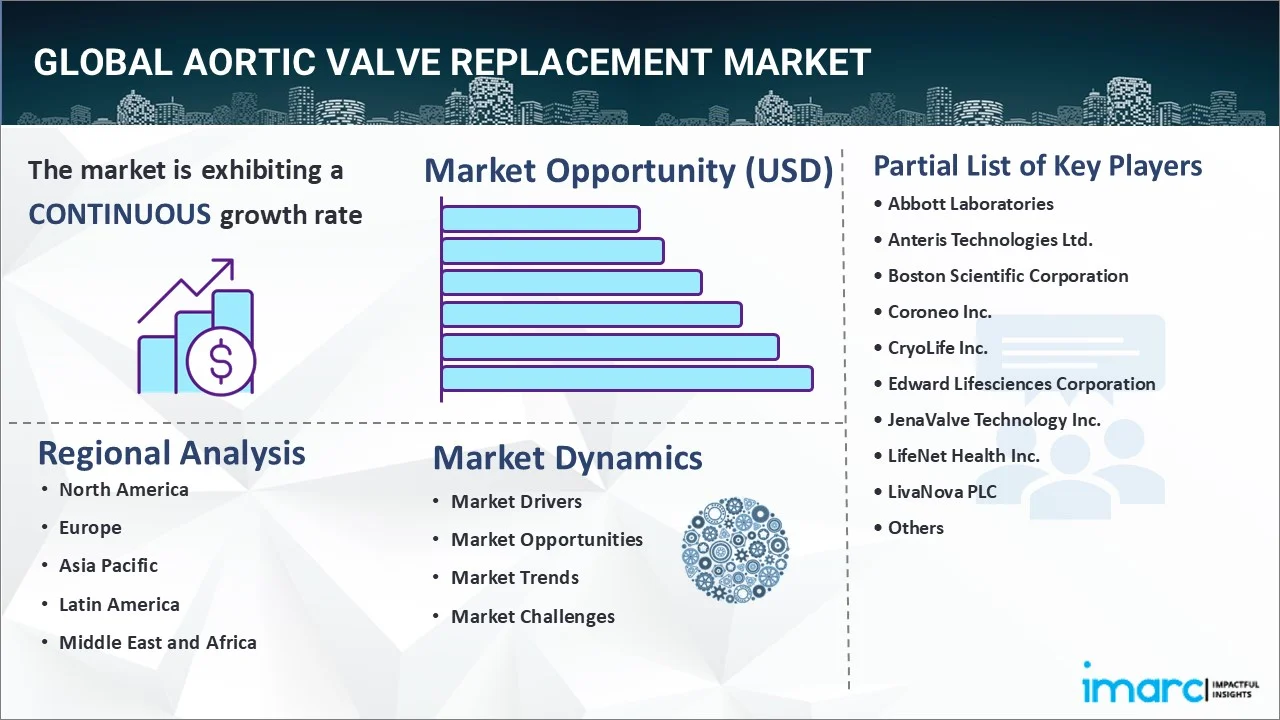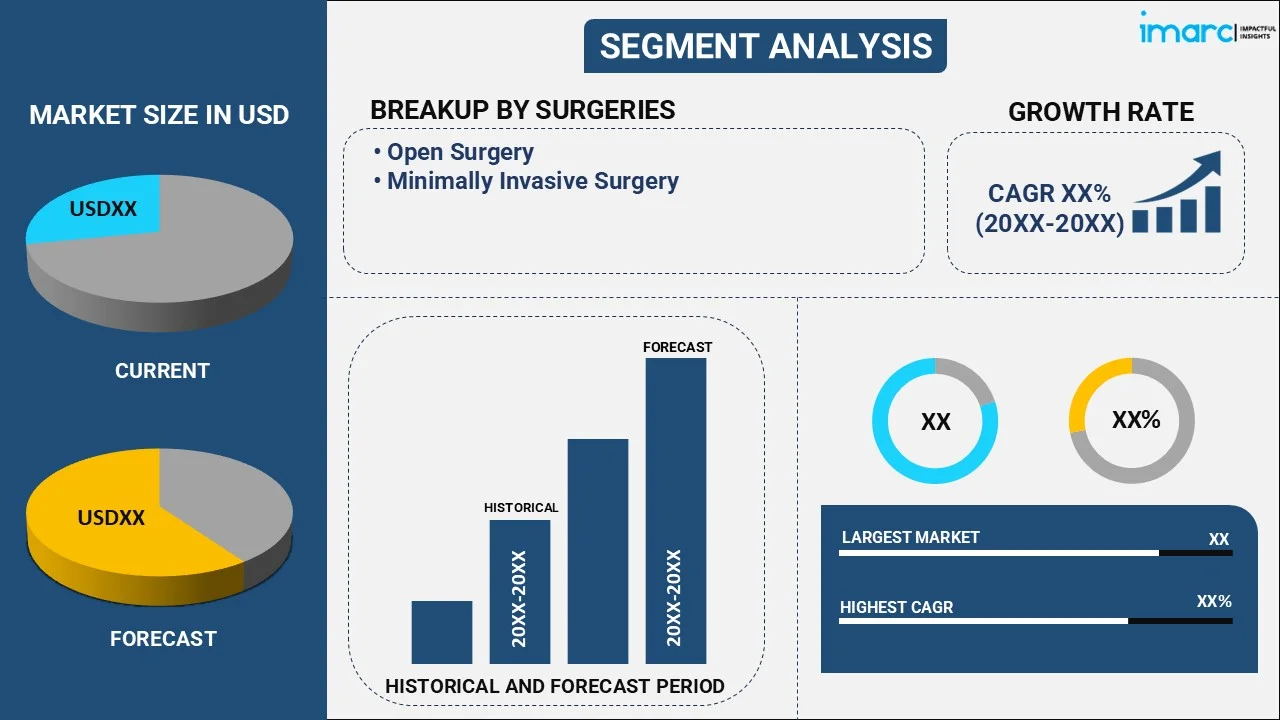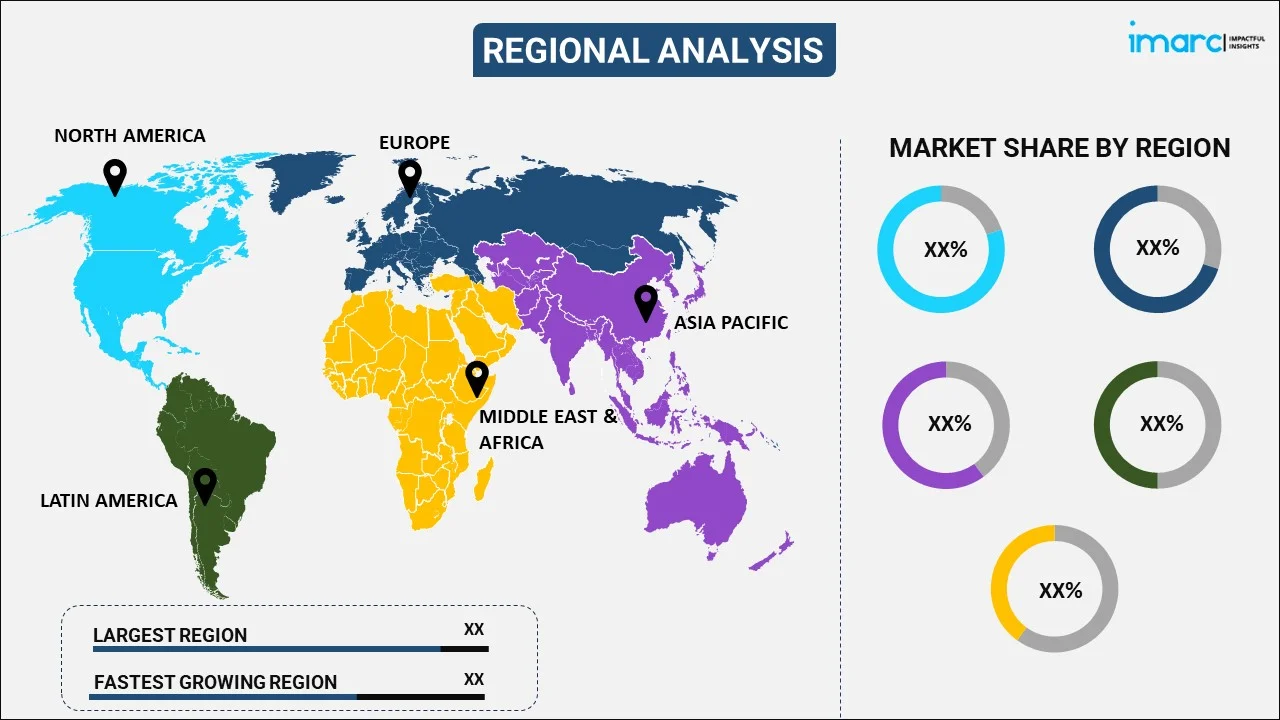
Aortic Valve Replacement Market Report by Surgery (Open Surgery, Minimally Invasive Surgery), Product (Transcatheter Aortic Valve, Sutureless Valve, and Others), End Use (Hospitals, Ambulatory Surgery Centers, and Others), and Region 2025-2033
Aortic Valve Replacement Market Overview:
The global aortic valve replacement market size reached USD 11.2 Billion in 2024. Looking forward, IMARC Group expects the market to reach USD 26.8 Billion by 2033, exhibiting a growth rate (CAGR) of 9.62% during 2025-2033. The increasing prevalence of aortic diseases, rising implementation of health insurance policies, and the growing adoption of MIS procedures represent some of the key factors driving the market.
|
Report Attribute
|
Key Statistics
|
|---|---|
|
Base Year
|
2024 |
|
Forecast Years
|
2025-2033 |
|
Historical Years
|
2019-2024
|
|
Market Size in 2024
|
USD 11.2 Billion |
|
Market Forecast in 2033
|
USD 26.8 Billion |
| Market Growth Rate 2025-2033 | 9.62% |
Aortic valve replacement is a surgical procedure performed to replace a diseased or damaged aortic valve in the heart. It is usually operated through the traditional open-heart surgery, which involves incising the chest or using minimally invasive (MI) methods that require smaller incisions in the chest or a catheter incorporated in the leg. It treats diseases that affect the valves and controls blood flow through the heart. It aids in restoring normal blood flow, reducing symptoms, prolonging life, and preserving the function of the heart muscle. It is generally recommended for patients with severe aortic valve disease, including aortic stenosis or aortic regurgitation, that has symptoms like chest pain, shortness of breath, and fatigue.

Aortic Valve Replacement Market Trends:
The surging prevalence of aortic diseases among the masses and the increasing aging population that is more prone to developing these medical disorders represent one of the major factors driving the demand for aortic valve replacement around the world. Moreover, the rising implementation of health insurance policies that offer financial assistance for aortic valve replacement and reduce medical expenses is favoring the growth of the market. In addition, the growing awareness about aortic diseases, their symptoms, diagnosis, and the easy availability of the treatment options like aortic valve replacement is influencing the market positively. Apart from this, there is an increase in the adoption of transcatheter aortic valve replacement (TAVR), minimally invasive surgical (MIS) procedure that helps replace the aortic valve without open-heart surgery and is generally preferred by patients who are at major risk for traditional open-heart surgery. This, coupled with the rising preferences for MIS procedures on account of fewer operative complications, shorter hospitalization, less pain, reduced postoperative care, quicker recovery, and lower risk of infection, is propelling the growth of the market. Furthermore, the integration of artificial intelligence (AI) and machine learning (ML) in imaging techniques of aortic valve replacement to identify patients who are at higher risk for complications and optimize the procedure and postoperative care is contributing to the market growth. Besides this, governing agencies of numerous countries are undertaking measures to offer quality healthcare facilities that are accessible to all. This, along with significant improvements in the diagnostic technologies, is strengthening the growth of the market.
Key Market Segmentation:
IMARC Group provides an analysis of the key trends in each sub-segment of the global aortic valve replacement market report, along with forecasts at the global, regional and country level from 2025-2033. Our report has categorized the market based on surgery, product and end use.
Surgery Insights:

- Open Surgery
- Minimally Invasive Surgery
The report has provided a detailed breakup and analysis of the aortic valve replacement market based on the surgery. This includes open surgery and minimally invasive surgery. According to the report, minimally invasive surgery represented the largest segment.
Product Insights:
- Transcatheter Aortic Valve
- Sutureless Valve
- Others
A detailed breakup and analysis of the aortic valve replacement market based on the product has also been provided in the report. This includes transcatheter aortic valve, sutureless valve, and others. According to the report, transcatheter aortic valve accounted for the largest market share.
End Use Insights:
- Hospitals
- Ambulatory Surgery Centers
- Others
The report has provided a detailed breakup and analysis of the aortic valve replacement market based on the end use. This includes hospitals, ambulatory surgery centers, and others. According to the report, hospitals represented the largest segment.
Regional Insights:

- North America
- United States
- Canada
- Asia-Pacific
- China
- Japan
- India
- South Korea
- Australia
- Indonesia
- Others
- Europe
- Germany
- France
- United Kingdom
- Italy
- Spain
- Russia
- Others
- Latin America
- Brazil
- Mexico
- Others
- Middle East and Africa
The report has also provided a comprehensive analysis of all the major regional markets, which include North America (the United States and Canada); Asia Pacific (China, Japan, India, South Korea, Australia, Indonesia, and others); Europe (Germany, France, the United Kingdom, Italy, Spain, Russia, and others); Latin America (Brazil, Mexico, and others); and the Middle East and Africa. According to the report, North America (the United States and Canada) was the largest market for aortic valve replacement. Some of the factors driving the North America aortic valve replacement market included extensive research and development (R&D) activities, well established healthcare facilities, integration of advanced technologies, etc.
Competitive Landscape:
The report has also provided a comprehensive analysis of the competitive landscape in the global aortic valve replacement market. Competitive analysis such as market structure, market share by key players, player positioning, top winning strategies, competitive dashboard, and company evaluation quadrant has been covered in the report. Also, detailed profiles of all major companies have been provided. Some of the companies covered include Abbott Laboratories, Anteris Technologies Ltd., Boston Scientific Corporation, Coroneo Inc., CryoLife Inc., Edward Lifesciences Corporation, JenaValve Technology Inc., LifeNet Health Inc., LivaNova PLC, Medtronic plc, Thubrikar Aortic Valve Inc., etc. Kindly note that this only represents a partial list of companies, and the complete list has been provided in the report.
Report Coverage:
| Report Features | Details |
|---|---|
| Base Year of the Analysis | 2024 |
| Historical Period | 2019-2024 |
| Forecast Period | 2025-2033 |
| Units | Billion USD |
| Segment Coverage | Surgery, Product, End Use, Region |
| Region Covered | Asia Pacific, Europe, North America, Latin America, Middle East and Africa |
| Countries Covered | United States, Canada, Germany, France, United Kingdom, Italy, Spain, Russia, China, Japan, India, South Korea, Australia, Indonesia, Brazil, Mexico |
| Companies Covered | Abbott Laboratories, Anteris Technologies Ltd., Boston Scientific Corporation, Coroneo Inc., CryoLife Inc., Edward Lifesciences Corporation, JenaValve Technology Inc., LifeNet Health Inc., LivaNova PLC, Medtronic plc and Thubrikar Aortic Valve Inc. |
| Customization Scope | 10% Free Customization |
| Post-Sale Analyst Support | 10-12 Weeks |
| Delivery Format | PDF and Excel through Email (We can also provide the editable version of the report in PPT/Word format on special request) |
Key Benefits for Stakeholders:
- IMARC’s report offers a comprehensive quantitative analysis of various market segments, historical and current market trends, market forecasts, and dynamics of the aortic valve replacement market from 2019-2033.
- The research study provides the latest information on the market drivers, challenges, and opportunities in the global aortic valve replacement market.
- The study maps the leading, as well as the fastest-growing, regional markets. It further enables stakeholders to identify the key country-level markets within each region.
- Porter's five forces analysis assist stakeholders in assessing the impact of new entrants, competitive rivalry, supplier power, buyer power, and the threat of substitution. It helps stakeholders to analyze the level of competition within the aortic valve replacement industry and its attractiveness.
- Competitive landscape allows stakeholders to understand their competitive environment and provides an insight into the current positions of key players in the market.
Key Questions Answered in This Report
The global aortic valve replacement market was valued at USD 11.2 Billion in 2024.
We expect the global aortic valve replacement market to exhibit a CAGR of 9.62% during 2025-2033.
The rising utilization of aortic valve replacements, as they aid in restoring normal blood flow, reducing symptoms, prolonging life, preserving the function of the heart muscle, etc., is primarily driving the global aortic valve replacement market.
The sudden outbreak of the COVID-19 pandemic had led to the postponement of elective open-heart surgical procedures to reduce the risk of the coronavirus infection upon hospital visits and interaction with medical equipment, thereby negatively impacting the global market for aortic valve replacements.
Based on the surgery, the global aortic valve replacement market can be segmented into open surgery and minimally invasive surgery. Currently, minimally invasive surgery holds the majority of the total market share.
Based on the product, the global aortic valve replacement market has been divided into transcatheter aortic valve, sutureless valve, and others. Among these, transcatheter aortic valve currently exhibits a clear dominance in the market.
Based on the end use, the global aortic valve replacement market can be categorized into hospitals, ambulatory surgery centers, and others. Currently, hospitals account for the largest market share.
On a regional level, the market has been classified into North America, Asia-Pacific, Europe, Latin America, and Middle East and Africa, where North America currently dominates the global market.
Some of the major players in the global aortic valve replacement market include Abbott Laboratories, Anteris Technologies Ltd., Boston Scientific Corporation, Coroneo Inc., CryoLife Inc., Edward Lifesciences Corporation, JenaValve Technology Inc., LifeNet Health Inc., LivaNova PLC, Medtronic plc, and Thubrikar Aortic Valve Inc.
Need more help?
- Speak to our experienced analysts for insights on the current market scenarios.
- Include additional segments and countries to customize the report as per your requirement.
- Gain an unparalleled competitive advantage in your domain by understanding how to utilize the report and positively impacting your operations and revenue.
- For further assistance, please connect with our analysts.
 Inquire Before Buying
Inquire Before Buying
 Speak to an Analyst
Speak to an Analyst
 Request Brochure
Request Brochure
 Request Customization
Request Customization




.webp)




.webp)












